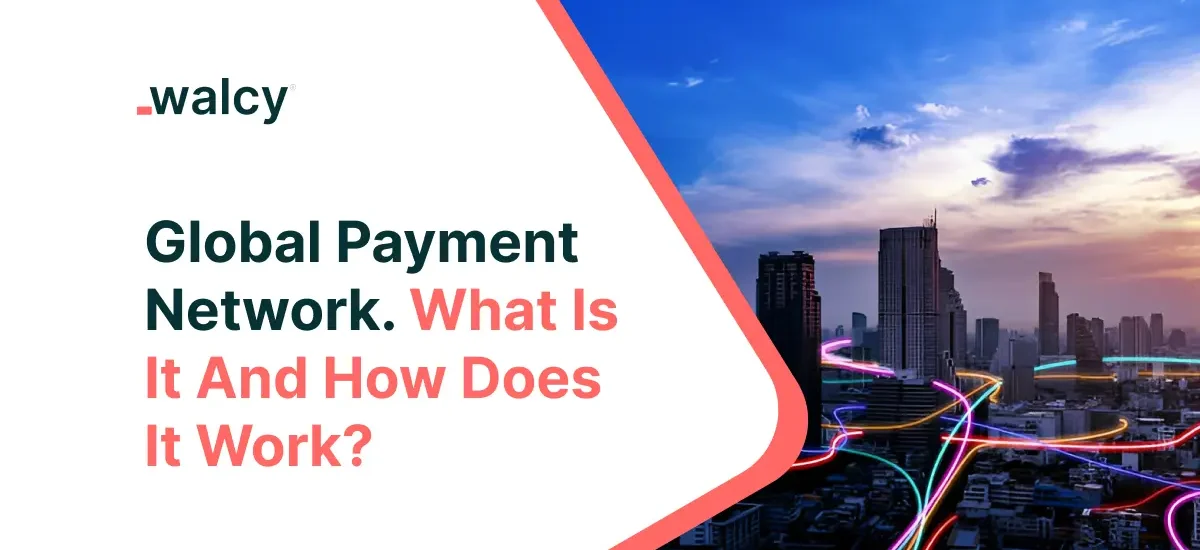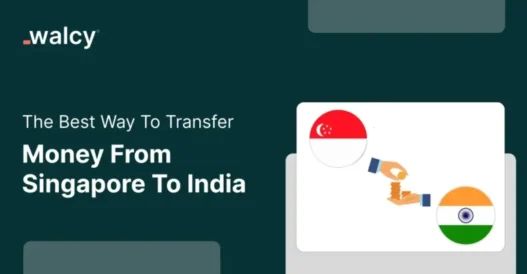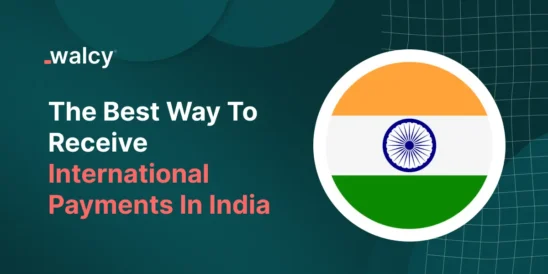A global payment network comprises different systems and infrastructures that help the flow of money across international borders. The networks, through their banks, financial institutions, and payment service providers, interlink to dispense smooth and secure financial transactions anywhere in the world. The paper will go through an elaborate analysis of elements and mechanisms of global payment networks associated with SWIFT, ACH Networks, Global Payments and Treasury Networks, Global Merchant Accounts, Instant Payment Networks, and fees associated with these.
Major Global Payment Networks
There are several global Payment Networks available globally. These payment networks can be categorized into four different types:
- Credit card networks
- Electronic-funds-transfer systems
- Peer-to-peer (P2P) payment networks
- Other payment networks
Credit Card Networks
Credit card networks are the communication systems that connect credit card issuers (banks) and merchants to authorize and process credit card transactions. The following are the primary purposes of credit card networks:
- Facilitate authorization and processing of credit card transactions between issuers and retailers.
- Establish the rules, fees, and terms for credit card transactions.
- Offer fraud protection and liability covering for transactions.
- Provide cardholders with additional advantages and incentives, including as travel insurance and extended warranties.
Overall, credit card networks play an important role in facilitating the widespread use of credit cards for payment by companies and consumers. Credit card networks are primarily split into two categories: open networks and closed networks.
In an open credit card network, other financial institutions can offer their credit cards to customers while the credit card company is the only one that issue cards, in closed credit card networks.
- Examples of open credit card network
- Visa
- Mastercard
- Examples of closed credit card network
- American Express
- Discover
Electronic Funds Transfer Systems
ACH Network
It is an electronic network used within the United States for processing many payments. However, it has its counterparts in other countries also. It forms a basis through which bulk credit and debit transactions are processed.
ACH payments are processed in batches, generally taking a day or two business days. Common transactions include direct deposit, payroll, and vendor payments. The ACH network significantly brings down transaction costs compared to the traditional paper-based methods by processing in batches and is predominantly used for regular low-value transactions.
The ACH system provides an efficient, more cost-effective alternative to traditional wire transfers and checks. The primary regulatory authority for electronic payments in the United States is the primary Automated Clearing House Association or NACHA. ACH transactions are a necessity for businesses and people, facilitating direct deposit, automatic bill payment, and person-to-person transfers.
Global SWIFT Payment Network:
The SWIFT is a messaging network that banks and financial institutions use to transfer information and instructions securely using a defined set of codes.
In using SWIFT codes, banks on the SWIFT Payment network send payment orders to each other. The messages are secure, standardized, and consistent in form to reduce errors in international payments. Each SWIFT message is unique, containing the details required to finally complete the transaction according to initiator and beneficiary information along with the amount of the transaction.
SWIFT acts as the backbone of international transactions, helping to facilitate cross-border payments between various banks in different countries does not transfer money but rather issues payment orders that must be fulfilled by correspondent accounts that institutions hold with each other.
Its dependability and security make it a vital cornerstone due to its capacity to gain trust from global finance, and its network extends to over 200 countries and includes over 11,000 financial institutions.
(Learn about the SWIFT alternatives for businesses for cross-border payments)
Wire Transfers:
A wire transfer is a popular electronic method for sending money from one person to another. It can be of two major types i.e. domestic and international.
In practice, most wire transfers conducted by customers from one country to another nation are classified as “remittance transfers” under federal law. Usually, Banks use wire transfers for transferring funds because it is one of the oldest and most effective payment networks.
Know the differences between bank transfer and remittance.
Peer-To-Peer (P2P) Payment Networks
Peer-to-peer (P2P) payment networks let people transmit money to one another without going via financial institutions or the networks that handle the payments. P2P payment services are transactions between two parties with separate bank accounts, mediated by a third-party website or mobile app. It has different rules for what kind of accounts can be linked and fees for instant transfers or international payments may be charged.
(Know about the cheapest ways to transfer money abroad)
Peer-to-peer networks are a relatively recent innovation. P2P payment networks are a simple method for consumers to pay businesses, businesses to pay other businesses, and friends and family to trade money. Yes, it is more convenient but users should protect their login information and know who they’re sending money to to defend themselves against potential cybercrimes.
How it works?
An account holder must link their personal bank account to a P2P payment service when they join up for it, usually via an online portal or mobile app. Certain accounts are not allowed to be linked to P2P services under certain service provider policies.
Users that have connected accounts can transfer money straight to another user’s P2P account that has registered with the same provider. Although some approaches need a second step to move money from the app to the associated bank account, in other circumstances, a user’s money is automatically transferred into a linked bank account. Receiving funds into bank accounts can take anything from a few seconds to several working days, contingent on the P2P account.
Other Payment Networks
Global Payments and Treasury Network
This network embodies systems and services that multinationals leverage in the management of their financial operations on a global scale—from payment to liquidity and treasury management activities.
Such networks, therefore, integrate several payment systems with several banking services to take central control over the company’s finances, which in the long run will result in improving cash flow while reducing transaction costs. The best treasury management systems provide real-time data underpinning better decision-making within cash positions.
Global treasury and payment networks are very essential for large corporations with operations across the globe. They assist in currency risk management, working capital optimization, and compliance with international money regulations. Companies can consolidate all financial operations in one platform, providing better transparency and control over their global finances.
Global Merchant Account and Processing
It involves obtaining a global merchant account that helps businesses accept payments from any customer in the world. The means are usually by credit cards, debit cards, and online gateways.
A merchant teaming up with a payment processor to process the transactions. It’s up to the processor how payment will be authorized, captured, and then settled down by receiving the money into their accounts from that of customers. This process plays a very key role in e-commerce. Because of this process, business people are in a position to reach more customers than they could have without it.
For example, this would be of essence to businesses targeting the international/global market. They offer a network through which one can accept various methods of payment as well as different currencies. In the development of customer experience as well as in the improvement of sales, they play an important role. Processing payment companies offer additional services in fraud prevention chargeback management and local compliance with local laws.
Merchant Payment Network
This is the infrastructure that allows merchants to accept and process customer payments, whether online or off.
Again, the most popular payment networks include Visa and MasterCard. They link merchants with financial institutions to facilitate the authorization, processing, and settlement of transactions. They ensure security in all transactions while funds move efficiently.
They are an important part of any retail business, as they serve as the liaison between the merchants, banks, and card networks. They connect the in-store point-of-sale systems to the shopping cart on an e-commerce website, processing all transactions. They also offer value-added services, which include loyalty programs, analytics, and customer support.
Instant Global Payment Network
Real-time payment (RTP) refers to a system where banks and financial institutions are connected to it, through which they can instantly transfer funds that become available to the recipient instantly.
RTP systems, like the one operated by The Clearing House in the US, allow the processing of payments at any time; funds are made available to the recipient almost instantaneously, following one’s initiation of the transaction. This is very useful when effecting time-critical transactions and confers greater convenience on the consumer and business world.
High-speed, efficient instant payment networks are the future of digital payments, doing things that traditional systems couldn’t. They support everything from peer-to-peer transfers to bills and business-to-business payments. In facilitating real-time settlement, they reduce the risk of fraud and boost cash flow among businesses.
Payment Network Fees
These are the fees that the payment networks charge for processing transactions. It includes interchange fees, assessment fees, and processor fees. These interchange fees get paid to the cardholder’s bank by that of the merchant. While the card networks charge an assessment fee, the processor fees are charged by the payment processors for rendering their services. Again, all these fees differ by transaction volume, risk factors, and the type of card in use. These fees need to be understood to manage the costs of any business.
Network fees are another large factor for companies, especially those that process many transactions. Card networks impose interchange fees, which vary depending on the kind of card and transaction.
An additional assessment is added by the networks, as well as the payment processors tacking on their fees—all of these must be balanced out by a business against its proposed payment solution.
(Know the fees associated with overseas payments)
How Global Payment Networks Work?
Global payment networks comprise a myriad of electronic funds transfers, messaging protocols, and financial institutions that work together to move money from point A to point B securely. Here is a simplified explanation of how this happens:
- Initiation:
A customer initiates a payment through a bank or a payment service provider. This can be through internet commerce, wiring, or direct debit.
- Authorization:
The payment request will be routed through the network for authorization. For card payments, this would involve checking sufficient funds and fraud detection. Authorization checks the details of the transaction for validity and verifies that the payer has enough funds or credit limit.
- Processing:
What follows authorization is the routing of transaction details to corresponding financial institutions for processing. Aside from checking, this moves the money around, most of the time through intermediary banks or payment processors.
- Settlement:
The transaction money is transferred from the payer’s bank to the payee’s. This can happen in real-time or in batches, depending on the network. It makes the funds available to the recipient and it completes the transaction.
- Confirmation:
The transaction gets confirmed by both parties concerned with the same, and funds are made available to the recipient. Confirmation assures both the payer and the payee that the transaction has been completed successfully.
Conclusion
International trade, global e-commerce, and cross-border services are based on global payment networks that form the infrastructure needed for the smooth processing of financial transactions across the world. The systems and services include SWIFT, ACH, global merchant processing, and instant payment networks, all very important in seeing that funds move securely and efficiently between points.
These networks thus evolved in tandem with technological advancement to bring in faster, more secure, more cost-effective solutions for global payments. In particular, instant payment networks are changing people’s concept of money transfers with real-time settlement and greater convenience.
Enterprises and financial institutions must be aware of the dynamics occurring within these networks. Knowing global payment networks brings business to the global level. Those companies that make the features of global payment networks possible can improve their financial operations and reduce transaction costs, extending their reach in the global market. Further innovation, more interoperability, and enhanced security will help money move across borders with ease and efficiency; it’s a promising future for global payments.
Learn more about foreign currency accounts
Learn more about overseas payments
Do follow us on Facebook and Linkedin, to stay connected with us.



